The History of Developer Evangelism
This essay is adapted from a talk I did in 2016 at DevRelCon. This is a topic I've wanted to talk about for a while. Sometimes I feel like the old guy from Up. Not only am I old and crotchety and my back doesn't work as well as it used to, but I feel like all of these young kids are getting into the field and they don't know the history of Developer Evangelism. But then I realized, I don't know the history of it either. I just sort of fell into developer evangelism from engineering. I didn't go to school for this. I got a computer science degree and spent many years as a coder and engineer. I came into this field by accident, as I assume many other people have as well. When I joined Sun Microsystems in 2005 I didn't mind speaking on stage about technical topics, so boom.. I became the developer evangelist for my team. So now I'm thrilled to be able to actually talk about the history of our field.
What is Developer Evangelism?

Before we get any further, let's set our definition: What is developer evangelism? For me it is about creating and evangelizing tools. A tool is something that people use to accomplish something else. The tool is not an end unto itself. If you are selling a hammer to a carpenter it's not because the carpenter really loves hammers. The carpenter is buying a hammer so he or she can build something for someone else, like a house. A hammer is a tool for putting nails into something.
It is this focus on tools which makes Developer Evangelism a very special form of marketing. It really bridges marketing and sales and engineering. And fundamentally it is about helping people do good stuff with our tools and technology.
When I started research for this talk I had already heard of Guy Kawasaki and other people from the early 90s. They were the ones who really inspired me. At first I thought that was the beginning of the field, but as I dug deeper I started to fall down the rabbit hole. I realized that developer evangelism goes very far back, so today we will need to take a little trip to the past.
Screws
From pretty much the dawn of history until the 1700s humanity has had screws. Screws were typically created out of wood or clay or very soft metals, usually as one-offs for a specific project. No screw was compatible with any others because it didn't really matter. Screws were very expensive and only used in special applications.
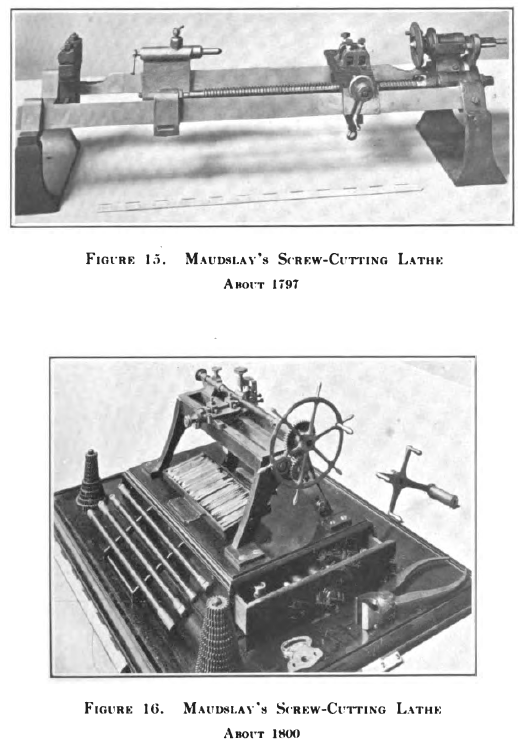
This all changed with the invention of the modern screw lathe in the 1770s. The screw lathe made it possible to create repeatable shapes and sizes for screws out of harder metals; and to make them faster and cheaper than ever before. This change caused the usage of screws to explode at the beginning of the industrial revolution. But a problem developed.
If anyone can create their own repeatable screws then everyone can create their own standards. And that is exactly what happened. By the mid 1800s there were hundreds of 'standards' all across the United States (and different ones in Europe and Britain). Different areas of the country would have different standards. Different companies would have different standadrds. Even different branches of the government had different standards.
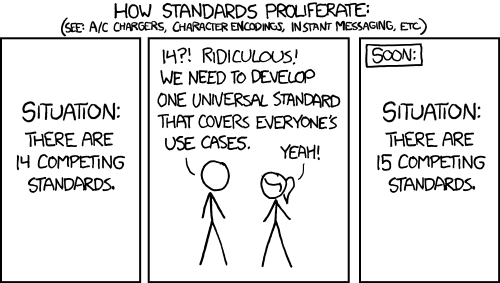
The explosion of standards caused chaos. Any given customer could only buy screws from one maker. The machining industry generally liked this because it gave the individual machinist a form of vendor lock-in, but it was holding back the industry as a whole.
William Sellers
Enter William Sellers. He was one of the premier machinists of his era. He owned several machine shops and was very well respected across the industry. Eventually he became the president of the Franklin Institute, which was the leading applied sciences institute of the day. Applied sciences is what we call engineering today.
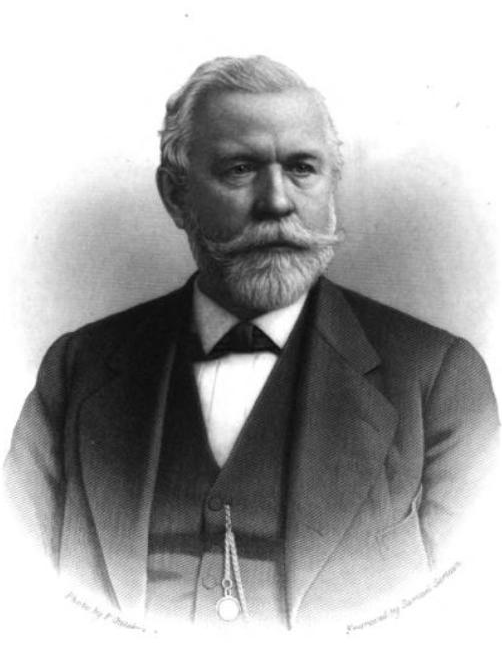
On April 21st, 1864, the first thing William Sellers did when he addressed the membership after becoming the president of the Franklin Institute was to give a talk entitled "On a Uniform System of Screw Threads". In this talk he proposed a new screw standard. His new standard was not focused on technical excellence, though it did adopt the best features of other screws. This standard was specifically focused on making the screws cheap and easy to produce in a very reliable way. He designed it so that machinists could make screws with only two tools instead of five. In his presentation he talked not only about the screw being good, but about the value of standardization itself and that it would benefit everyone.
The members of the Franklin Institute were suspicious. They had seen previous technological revolutions wreck other fields. The machinists were worried, with good cause, that if all parts were interchangeable then all of their profits would vanish and many would become unemployed. Sellers expected this resistance and planned for it.

Some of Sellers' customers were railroad companies. He talked with them and got a few of the big railroad companies on board. Then he used his connections in the military to convince the US Navy to switch. He asked them to compare his new screw with the standards coming out of Britain, who the US was not on good terms with then. Not wanting to depend on British standards, the US Navy agreed to use his new screw.
Sellers traveled the country promoting his standard. Soon other branches of the government signed on and eventually his screw became a nationwide standard that all machinists use. His belief was that if everyone standardized on a single design then we would be able to make more things with screws, increasing screw demand and profit for everyone, and to better compete with Europe.
History proved William Sellers correct. What was originally called the Sellers Standard eventually became the United States Standard screws, and finally became part of SAE, one of the two standards used in the world today (along with Metric).
William Sellers talked not only about the quality of the particular technology he was espousing, but also the value of standardization itself to the industry as a whole. His work benefited his competitors as well as himself. A "rising tide lifts all boats" philosophy. So I consider him the first developer evangelist.
Gas Lamps
Now let's skip ahead to 1908. Electrical power hadn't taken over the country yet so many of our cities were lit with gas street lamps. While bright and efficient, one of the problems with gas lamps is that they get hot. And since they are made of glass they can explode.. a lot.
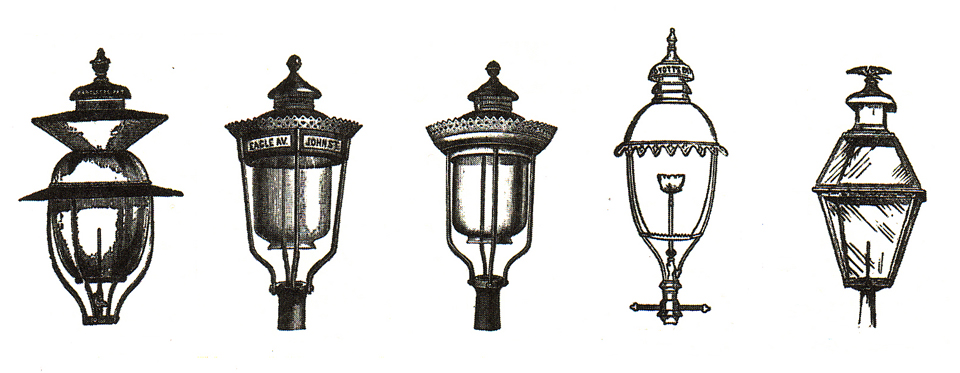
To solve the exploding lamp problem, clever engineers at Corning developed a new low thermal expansion glass. It was a glass that would not expand very much as it became hot, reducing the risk of explosion. They called it borosilicate glass, because the glass was mixed with boron.
Borosilicate glass did well in niche markets like gas lamps, but by the 1930s Corning wanted to expand market so they tried to get the general public to cook with their new glass. This was difficult because consumers already knew that one cannot cook with glass because it would break. They didn't know about Corning's new glass. To tackle this problem Corning did one of the first consumer education marketing campaigns to change the public perception.
The first thing Corning did was to change the horrible name borosilicate to something more pleasant and modern, Pyrex. They created ads explaining how Pyrex was "the modern way to cook".
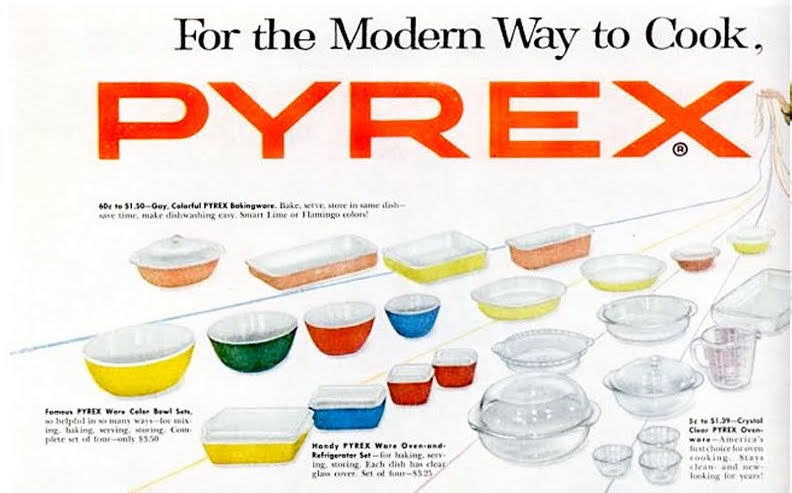
Notice how in this ad they aren't actually showing any food. They are talking about how their product would improve the act of cooking, not the food itself.
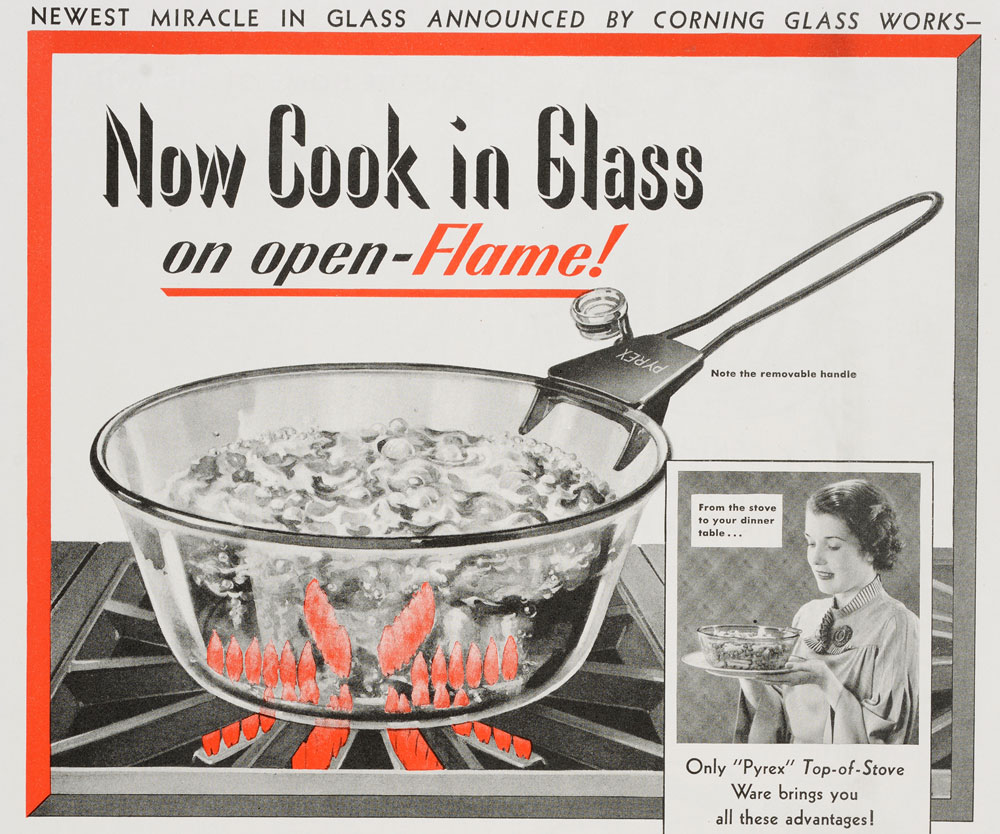
Here is another early advertisement highlighting glass on flames. They had to educate the consumer that this was possible. They also added new features which were focused not on the food itself, but on the act of cooking and serving the food. Notice the handle in this advertisement. This is a glass bowl that is a pot but you can take the handle off and bring it right to the table for serving. The cook doesn't need to use a separate serving dish. This was a feature specifically for house wives who were doing the cooking and cleaning at a home, not for the professional kitchen.
To further push Pyrex into the public conciousness they dreamed up another daring marketing scheme.
Hale Telescope
Famous astronomer George Hale received funding from the Rockefeller Foundation to create what was, at the time, the largest telescope ever built. Initially the telescope was using huge fused quartz crystals, but they had scaling problems with these so they turned to Corning. Corning created a 200 inch giant glass disk for the primary mirror, the largest single piece of glass that had ever been created. Since the disk was made on the east coast, Corning sent to by train to California. People would come see the giant piece of glass as it crossed the country, learning about Corning and Pyrex in the process. The Hale telescope is still in use today and it was the largest telescope in the world until the mid 1970s.
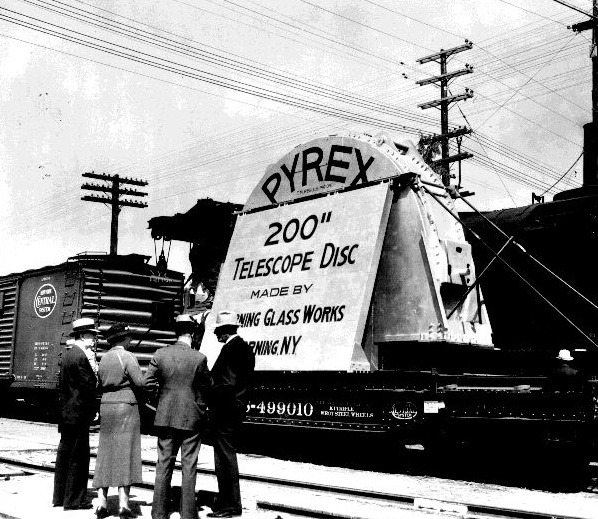
Reinventing Dinner
Now let's jump ahead to the 1940s.
During World War Two the Allied forces developed lots of new technologies. Not just new weapons tech, but also new food creation and preservation techniques. Freeze drying and dehydration became really big. And of course Spam, a new way of using leftover bits of food that we hadn't used before.

After the war was over the companies who made this technology needed a way to encourage people to cook using these new materials and techniques. They wanted to change they way people cooked. Laura Shapiro wrote the book Something from the Oven about how the food industry reinvented dinner in the 1950s.
The focus was not on the food itself but on how to improve the life of the person who was doing the cooking. a lot of talk about how to improve making your food, cooking more efficently, making your family your happier, cheaper ingredients and how to prepare food more quickly. The results didn't always result in better actual food. We got things like Shrimp Jello, but it certainly shows how the advertising focused on the tool user rather than the end product.
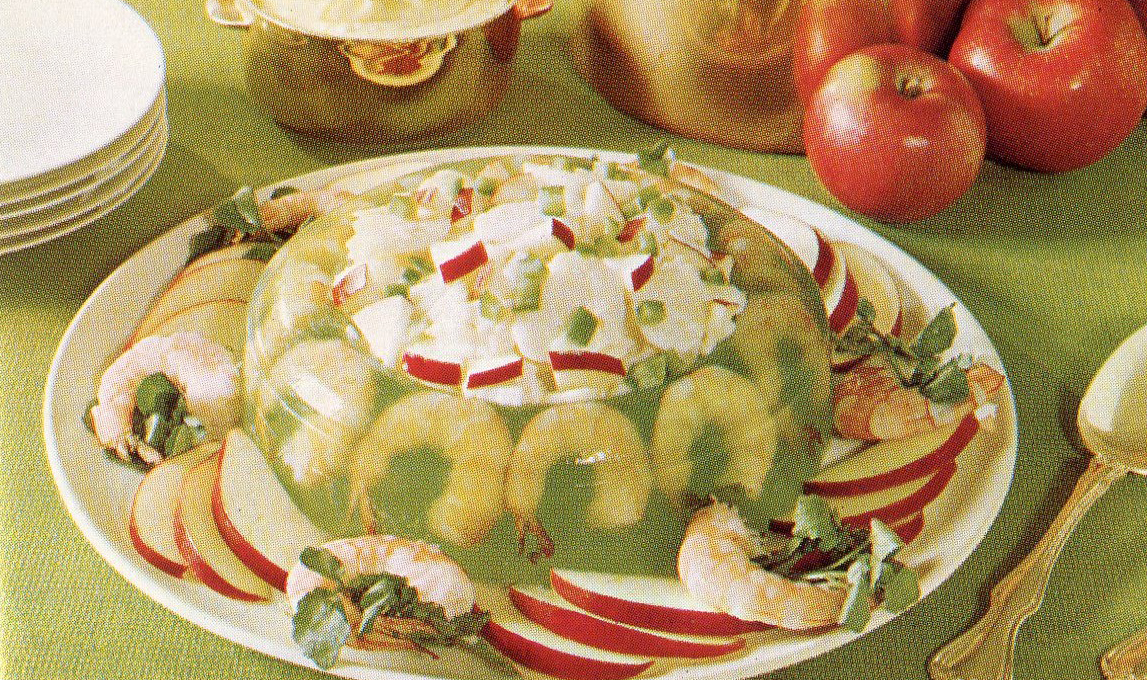
The First Developer Advocate
Lucy Maltby was a psychologist originally in school but she joined Corning and proposed that the company needed to study how their customers actually used the products. She set up an actual kitchen research lab. She brought in home chefs to see how they actually cooked, and actually watched them, not just ask questions. She had the male sales staff perform actual kitchen tasks to learn more about their products and how customers actually used things. Furthermore, she brought this research back from the field into product development to improve the next iteration of the products. I consider Lucy Maltby to be the first developer advocate.
The First Webinar
James Beard was a famous cook throughout much of the 20th century. After the war ended he created a show called I Love to Eat. He felt that anyone could cook fine french cuisine, not just gourmet chefs. He furthermore felt that the best way to teach was this new thing called television. Unfortunately we don't have any recordings because while TV had recently been invented, magnetic recordings had not. He taught people how to make fine french cuisine, 15 minutes at a time, so I consider him to be doing the first webinars.

First Hackathon
I think Pillsbury created the first hackathon. They had these baking contests all around the country. They encouraged people to bring their favorite recipes and compete against each other. As long as you used Pilsbury flour somewhere in the recipie anything goes. They heavily publicized these compeitions, reinforcing the idea that cooking was advancing into the future, and anyone can get involved (by buying Pilsbury flour).
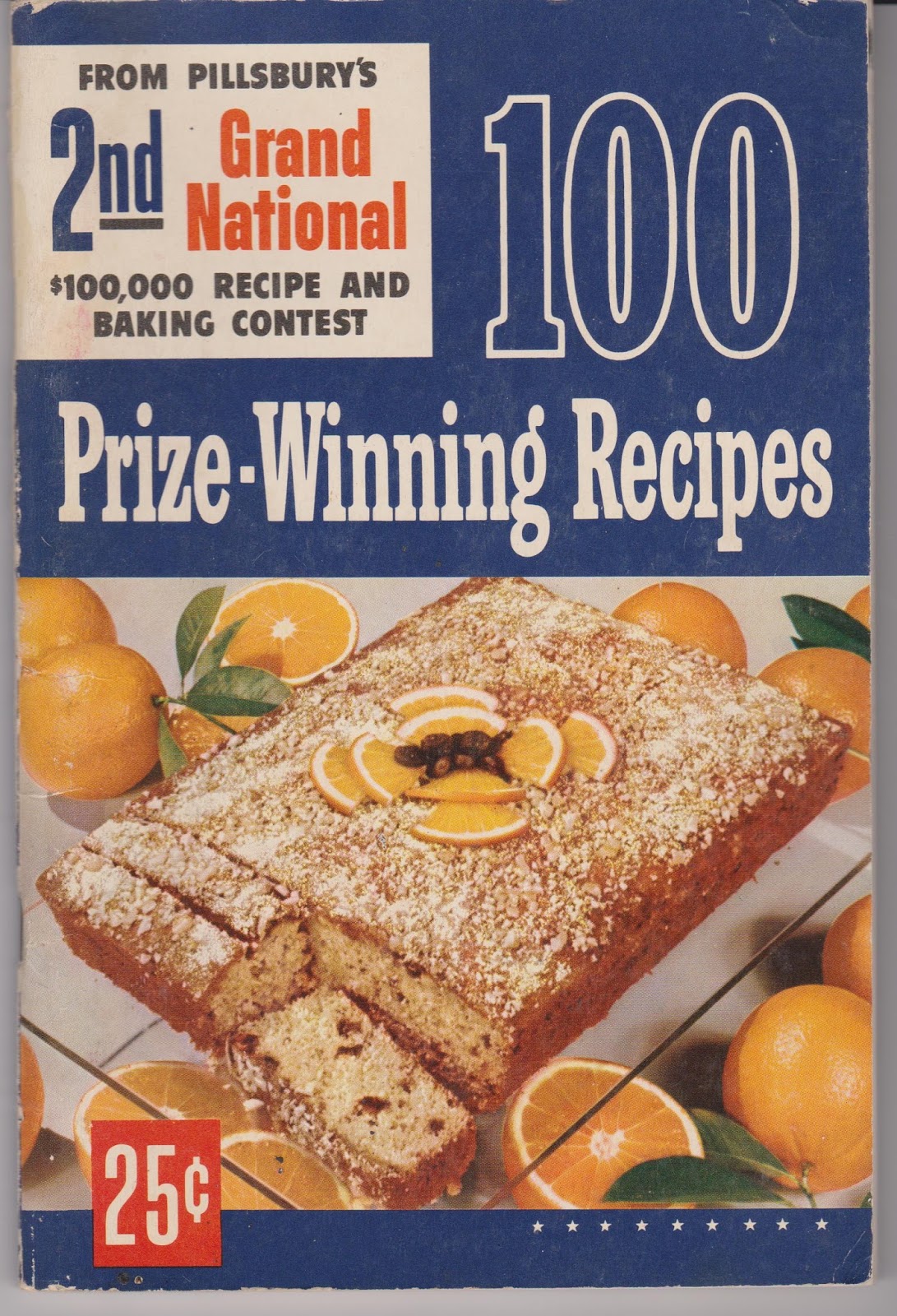
Finally some actual Computation
In 1951 Grace Hopper created the first compiler, though in modern terms it was more of a linker than a compiler. It was called A0. In 1953 it's successor A2 was released to UNIVAC's customers.
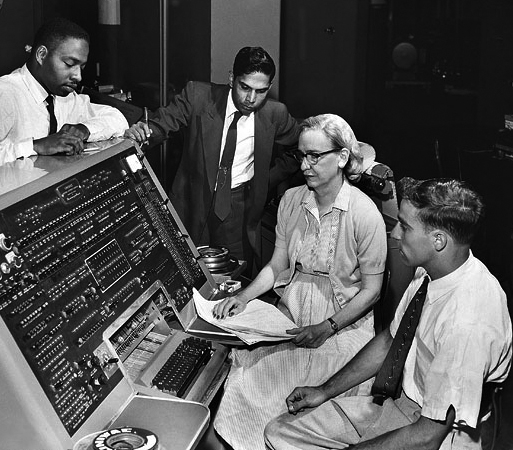
In these days computers were hugely expensive and customers were expected to write their own software. They didn't come with operating systems and apps. She felt strongly that these computers should at least come with sample code. They provided the code on magnetic tapes to their customers. they encouraged them to look at the code and send patches back to the company. This was the first collaborative development.
IBM 701
In 1955 IBM got into the mainframe game with the 701. They weren't as excited about giving away code to their customers, but the customers decided to take things into their own hands. they started a user group of people who swapped code building up a library called the SHARE library, for obvious reasons. Eventually this library grew so big it became and operating system for IBM mainframes. This was the first open source OS. This started in the mid 1950s. SHARE is still around today and has over 20k members.

1980s: Apple
First up is Mike Boich. He was an early evangelist during the apple 2 days. he met the computer genius Mark Barton who had figured out how to make an Apple II do speech synthesis. keep in mind this was a computer with a 1 Mhz processor. This was in the early 80s when the Mac was still in development. Mike showed a preview of the Mac to Mark, Mark ported his software to the Mac, then Mike got Mark and Steve Jobs into a room together. Steve thought it was amazing and bought the software so that the Mac could be the first computer to introduce itself on stage. Apple bought the software, renamed it Mac InTalk, and a descendant of this software is built into every Mac today.
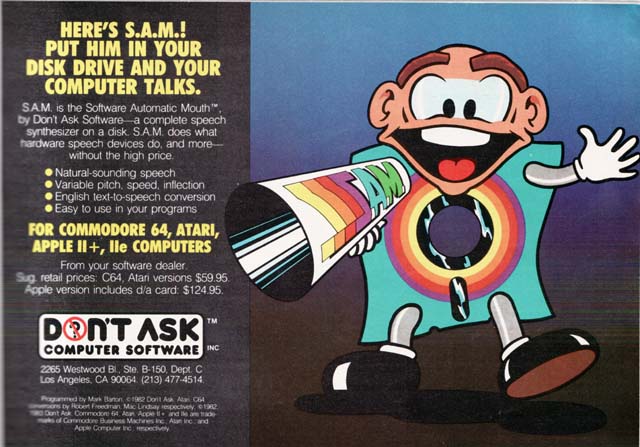
This was a case of a developer evangelist actually improving the product he was evangelizing.
Guy Kawasaki
So much has been written about Guy Kawasaki, including his own books. He was the guy who created the modern sense of a developer evangelist, including I believe the actual term technical evangelist. He did the leg work to find people who would be empowered by the Mac: graphic designers, small businesses, people who could now do things that they couldn't do before thanks to the Mac. He then helped them become successful.
Not only did guy teach Mac developers, he would go talk to their boss to convince them to buy the Mac. He would send them t-shirts. He would get Apple employees to speak at events. He always said that evangelism isn't about a product; it's about selling a dream. It's about what you can do with the product, or how the customer can be successful by using the product in the future. It's the dream.
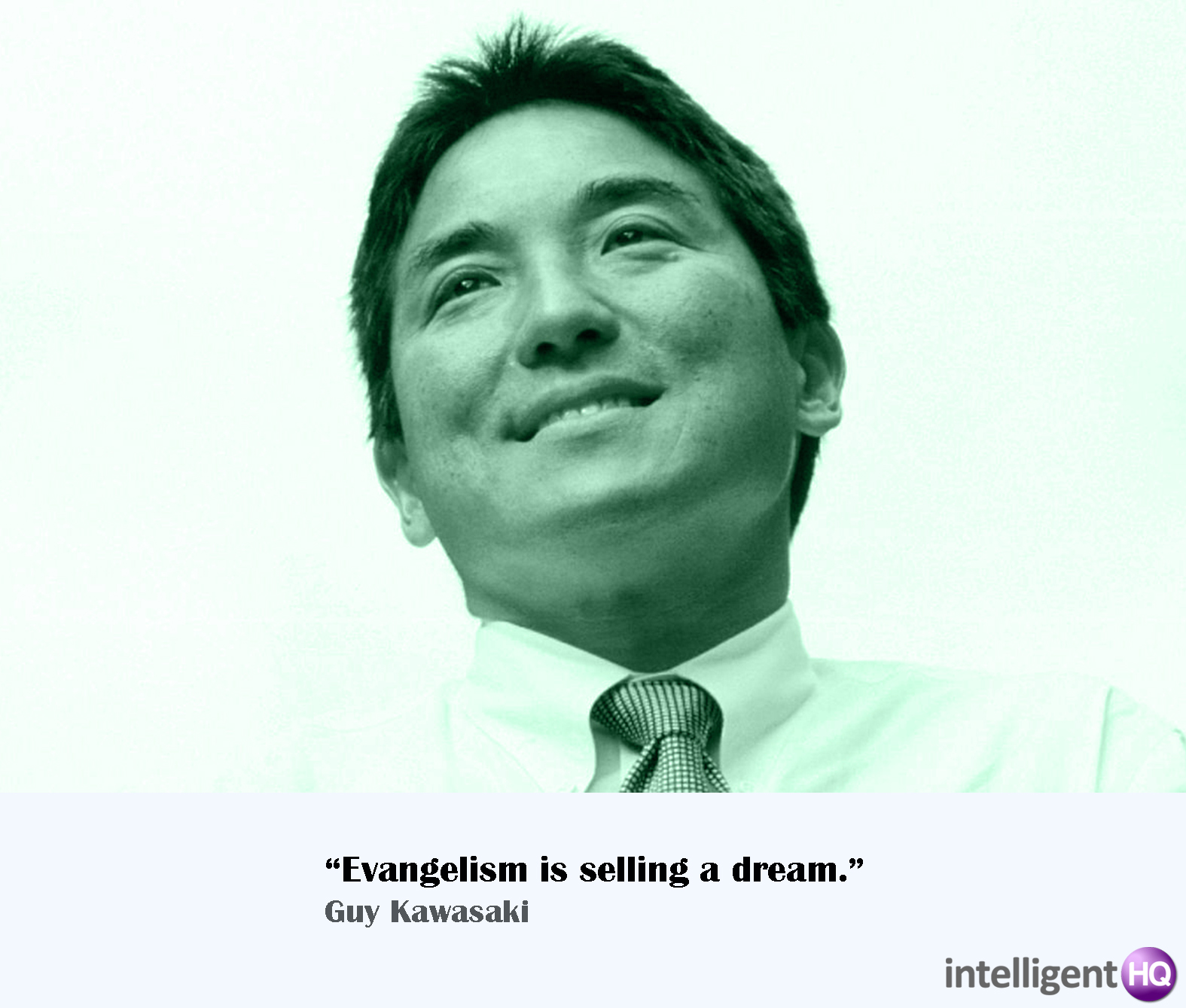
Guy Kawasaki has written a ton of great books. If Developer Evangelism is your field, then go read this book Selling the Dream, first. It's the textbook of developer evangelism.
The Modern Era
I love Kathy Sierra. She started a series of books called Head First. I think Headfirst Java was one of the first. These were a very different style of technical books than the other books of the time. They were funny and irreverent. They contained jokes and were very visually impactful. Kathy created this series because she felt technical topics shouldn't be dry. They should be fun. we should teach people how to be succesful, not just sell them a book.
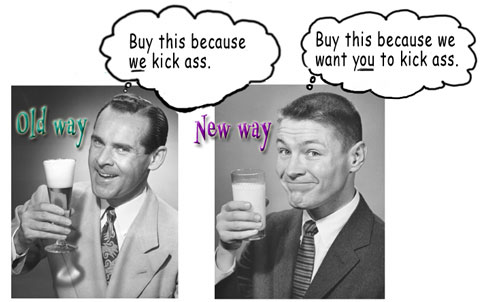
Kathy created this image. The old way is you should buy this product because we kick ass. This is the old IBM way. The new way is 'buy this product because we want you to kick ass. Use this product because it will make you better.
To make a long story slightly shorter

Developer evangelism has a long and amazing history spanning both engineering and marketing. However, I also think we are in a golden age when evangelism isn't just understood and accepted but considered an integral and essential part of any technical product. So to my devrel friends: you have joined a field with a long and illustrious tradition Go help people kick ass.
Posted June 6th, 2017
Tagged: